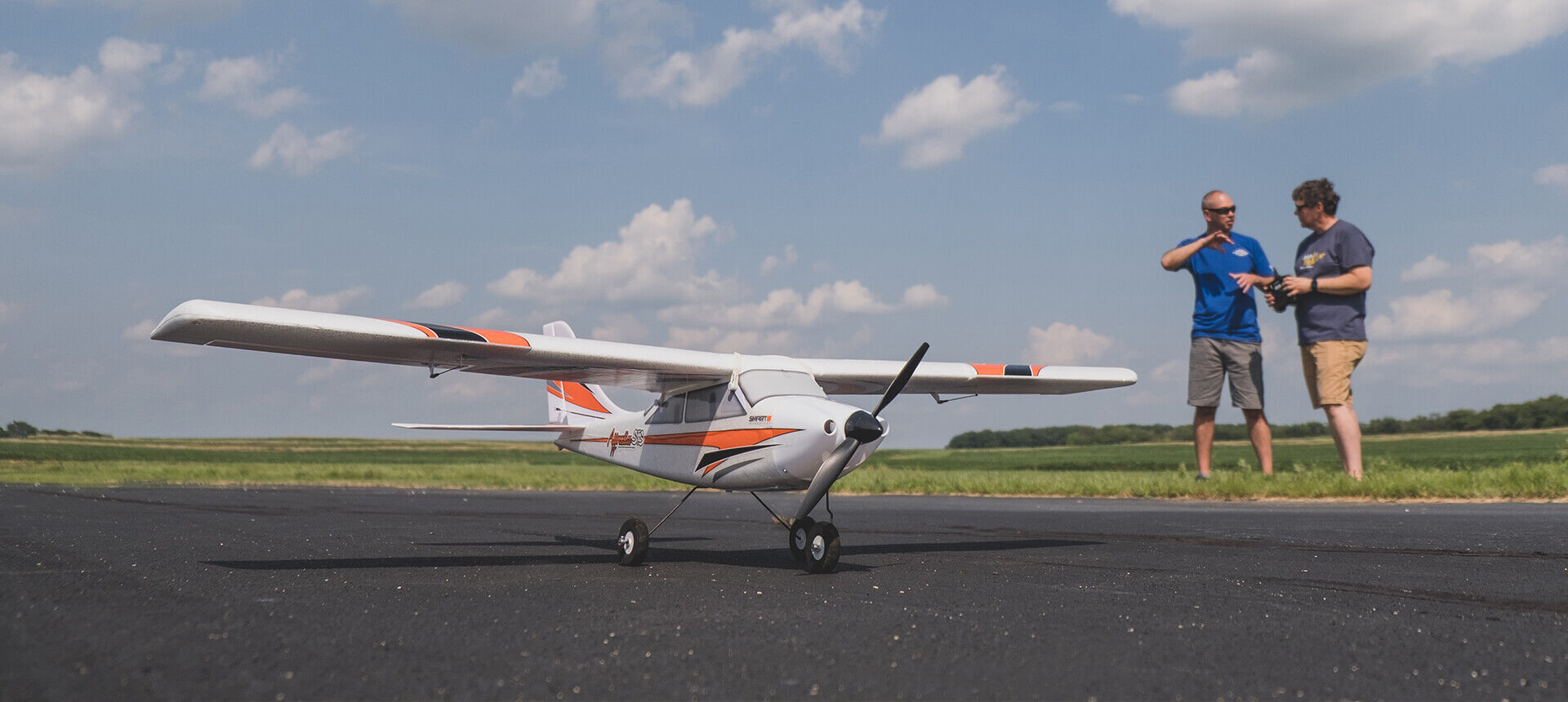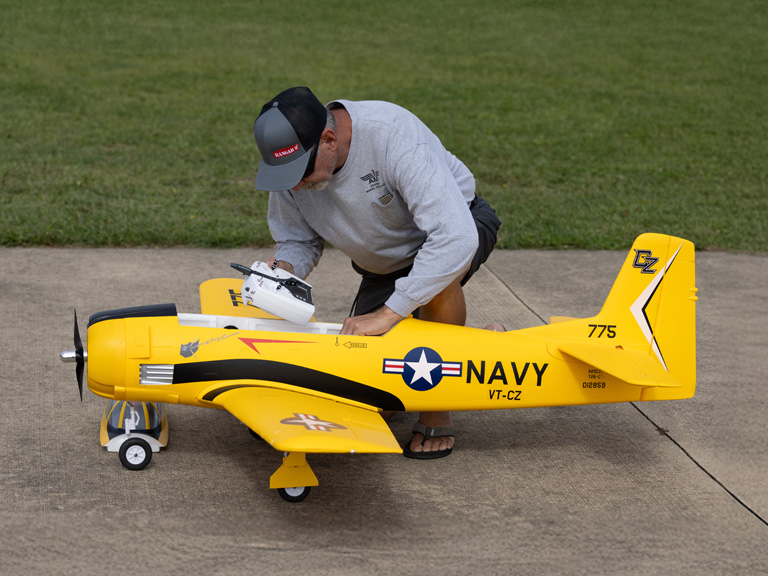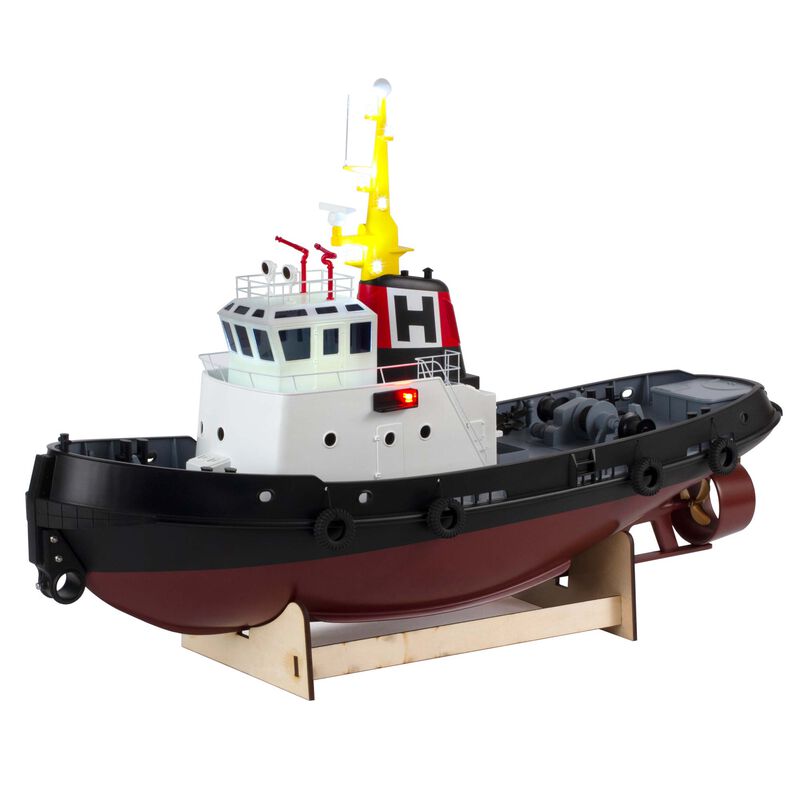
Tips For a Successful Float Flying Experience
Posted: 8/26/25
Cruising across the surface of the water, your RC airplane skips and splashes like a speed boat and then takes to the air, faint droplets of water shimmering in the air as they fall back to the water from the flying hull. It’s truly a beautiful sight. If you have access to a lake or pond, you have to give float flying a try!
After landing, the airplane can stay “on step,” hydroplaning across the water before settling into the water (much like waterfowl). Whether you are flying a land plane with pontoons or a plane that was designed from the ground up for water use, flying off the water can be exhilarating! Here are a few float flying tips to help you find success.
Not for Sea Water
Although it can be done, it’s not recommended to try flying RC models off salt water. It is amazing how fast the corrosion develops and how extensive the damage can be from saltwater exposure. If you expose electronics to saltwater, they are almost sure to be damaged beyond repair. This is an important first step in planning your float flying experience.
Navigating on the Water
Navigating on the water can be heavily impacted by wind. If there is no wind you can steer around at your leisure to explore the control envelope on the water. But as soon as the wind begins to blow, you will have to take it into account as the RC aircraft will want to weathervane. Plan to fly and taxi on the water upwind with the knowledge your model will get pushed back in your general direction. On the contrary, if you operate downwind it will tend to get pushed further away from you and you may have to retrieve it. Your airplane will weathervane into the wind, and this tendency will increase with windspeed. It may become impractical to turn with the wind in some situations, so you will need to plan where your airplane is going.
Taking Off and Landing
RC airplanes use a step in the pontoon to break the surface tension on the water and allow the airplane to rotate for takeoff. Without the step, most airplanes would stay stuck to the water and not want to take off! You will find there are two distinctly different modes of operation when on the water; slow speed taxi where the pontoons are floating, and high-speed taxi where the pontoons are skipping across the water, hydroplaning on the step. During slow speed taxi, you can use up-elevator to keep the prop clear from the water, but when you apply power, you should release the elevator to allow the model to rise up on-step as the airplane accelerates up to speed. You can hold some up-elevator during this transition if the model tends to nose down when accelerating, but you should relax the elevator input by the time the model is cruising on-step. If you hold too much up-elevator during this time, the model may become airborne too soon and stall. When the model is in a slow speed taxi the rudder will be more effective; be prepared to lose turning authority as the model accelerates. Save a little extra battery power to taxi on the water after landing, you don’t want to get your model stuck and require recovery!
PRO-TIP: Having a clean, sharp edge on the step helps break the surface tension on the water and makes for easier takeoffs. If your step is rounded off it cannot do its job of breaking the water tension as effectively, and the model will take longer to get off the water. If damage to the step is severe enough, it may prevent the RC airplane from being able to take off at all.
Have a Plan for Recovery
Sometimes you get caught off guard and need to recover your model. You can use a power boat, row boat, canoe, kayak, or other watercraft. If you are using a small boat, the best option is to carry a tow rope (string) and loop it around the propeller to tow it back, as opposed to trying it lift it out of the water. You can even build a radio control recovery boat from an old set of pontoons. Or, use a fishing pole with a tennis ball on the line for a simple but effective recovery tool, just toss the ball past your model and reel it in.
PRO-TIP: The Horizon Harbor 30” Tug Boat makes an excellent recovery watercraft. A little bit of PVC tubing turned into a fork with some foam padding and you can easily sail out and push an RC airplane back to shore. This is a great option if you’re float flying in a group when chances are more than one model will need a recovery.
What To Do If Your Electronics Do Get Wet
If you are flying off fresh water, you may be able to recover some of your electronics even if they get wet and stop working. There is no guarantee anything will work after water exposure, but it is worth a try. Rice is a simple and readily available solution that works wonders. Remove the wet components from the airframe and put them in a sealed container covered with rice for a few days. Some frequent float flyers just keep a bag of rice with them all the time for such eventualities and will place electronics in the rice while still on the shore.
PRO-TIP: When building your own seaplane, it is important to design your setup to keep electronics dry. You do need to cool the electronics, but try to avoid positioning air scoops near electronics, and ensure the ESC is located where it won’t get wet if water spray enters a cooling vent. Taking it to an extreme level, it is also possible to completely seal an airframe and integrate a heat sink into the airframe to cool the ESC. If you go this route, use heat conductive grease when you mount the ESC against the heat sink to maximize thermal conductivity.
Loss Prevention
If you fly large models off the water, there is a chance of losing heavy components in crash. Some pilots daisy-chain the engine to the landing gear, or even all the way to the pontoon, to prevent sinking in a worst-case scenario. You can use a throttle cable connected to a backplate screw for the engine side and run the cable directly into one of the pontoons and secure it deep into the pontoon structure during assembly. This technique was developed by the Portland Sky Knights club members after losing an engine to the bottom of Pinehollow Lake. The Sky Knights held the 57th annual NW seaplane championships at Pinehollow in 2025 and didn’t want to face future losses. Preventing this kind of loss is the environmentally friendly way to go.
PRO-TIP: Some aquatic flying sites will want to know how you manage loss prevention to keep the water clean. If your water site requires an application and permit for a float fly (always check in advance to see if this is necessary), be sure to outline the steps you and your club take to prevent litter and contamination.
Being A Good Steward
You might find you are sharing the water with fishermen, swimmers, boaters, and wildlife. It’s important to respect others’ space and avoid flying in an intimidating manner. Float flying often includes more interaction with the general public than other types of flying due to the water being a focal point of many different types of activities. If you’re doing a float fly with your RC club, make sure you have some printed flyers in your field kit to give out to people expressing an interest in joining you!
Lastly, a big thank you to Drew Shepardson of the Sky Knights for the great photo we're using!
Shop the Story

Aaron Shell
Aaron Shell is a lifelong hobbyist who started building and flying models when he was five. He found a career in the hobby starting with hobby shops, then magazines, and finally started working for Horizon Hobby in 2012. He has built and flown models of most aircraft types from sailplanes to seaplanes, and has been a Horizon Team member since 2015, getting to share the hobby with his son, Zephyr.
Related Articles

FAA Remote Identification - What You Need to Know
FAA Remote Identification – What You Need to Know
Learn More

Most Commonly Used Flight Box Items
We’ve compiled a list of the most used (and most borrowed) items in a flight box at the RC airfield to help you pack yours!
Learn More

Parts Needed for Completing Your ARF (Almost Ready to Fly) RC Airplane
Learn more about the commonly required parts and accessories for ARF (Almost Ready to Fly) model RC airplanes with our guide to completing your ARF airplane.
Learn More
